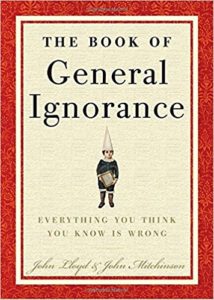Worm Your Way Into Readers’ Hearts with Business Blogs

The Tatoeba Project, which helps foreign students by translating from a foreign language into their own native language, has a lot to say about worms. Examples provided include sentences such as:
- Tom put a worm on the hook.
- Worms are sometimes beneficial to soil.
Even more interesting are these sentences:
- Tom opened a can of worms.
- The early bird gets the worm.
- Tom seldom reads an editorial and is not a bookworm.
As blog content writers in Indiana, the basic tool we use to bring our business owner clients’ message to their prospects and customers is – language. True, the majority of our targeted readers might be U.S. born and bred, but some of the “lingo” we sling about so casually – in our effort to write “engaging” copy – well, it might need explaining.
English idioms, the FluentU blog explains, are groups of words which have a meaning which isn’t obvious from looking at the individual words. “They’re used so often in everyday English,” the authors explain, “that if you don’t know them, it’s almost impossible to understand the context.” FluentU offers a number of examples:
- to hit the books
- to hit the sack
- to twist someone’s arm
- to be up in the air
- to stab someone in the back
- to lose your touch
- to sit tight
- to pitch in
- to face the music
- to be on the ball
- to be under the weather
- to blow off steam
- to cut to the chase
In blog marketing, the right words can make a big, big difference in what we like to call “the sales cycle” (itself an idiom!). When it comes to lingo and industry jargon, we can literally “arm” readers by sharing – and explaining – the buzzwords. That feeling of knowing the “inside scoop” allows prospects to feel in control and in a better position to make buying decisions with confidence.
Worm your way into blog readers’ hearts!
https://www.fluentu.com/blog/english/essential-english-idioms/





Follow us online!